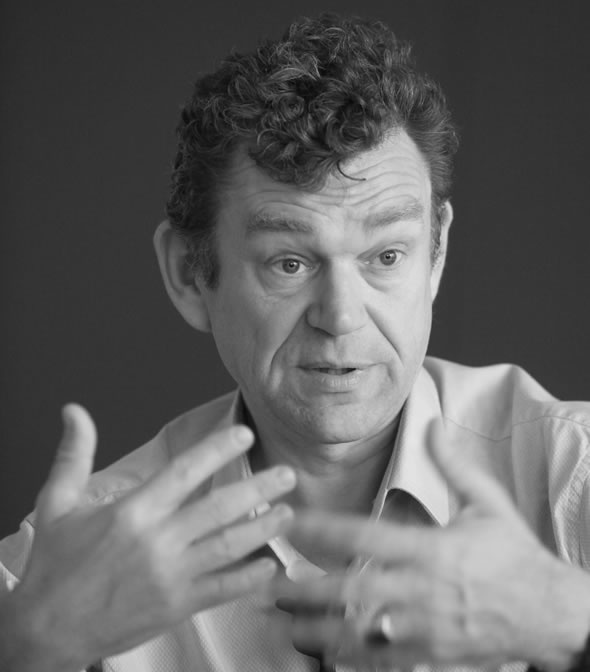Project Description
Paul F.M.J. Verschure

Dr. Paul F.M.J. Verschure
Professor of Neuroengineering,
Donders Centre of Neuroscience,
Donders Institute for Brain, Cognition and Behaviour,
Faculty of Science and Engineering,
Radboud University
Paul received both his Ma. and PhD in psychology. His scientific goal is to find a unified theory of mind, brain and body through the use of synthetic methods and to apply such a theory to the development of novel cognitive technologies. Paul has pursued his research at different institutes in the US at the Neurosciences Institute and The Salk Institute, both in San Diego, and in Europe at the University of Amsterdam, the University of Zurich, the Swiss Federal Institute of Technology-ETH, the Catalan Institute of Advanced Studies and Universitat Pompeu Fabra and the Institute for Bioengineering of Catalunya in Barcelona. Currently he holds the chair in Neuroengineering at the Faculty of Science and Engineering and the Donders Centre of Neuroscience.
Paul’s research spans Neuroscience, Cognitive Science, Neuropsychology, Complexity and Data Science, Robotics and Artificial Intelligence. His scientific aim is to develop a unified theory of mind and brain, to validate this theory using both synthetic and empirical methods and by applying it to technologies that support and advance the human condition. Paul manages a multidisciplinary team of about 30 researchers and technicians including neuroscientists, physicists, engineers, psychologists and computer scientists with whom he has published over 400 articles in leading journals and conferences in a range of disciplines.
To bring his science to society Paul has founded a number of spin-off companies and two foundations. Paul is founder/CEO of Eodyne Systems S.L. (Eodyne.com) and Sapiens5 Holding B.V., which are commercializing novel science grounded neurorehabilitation, education and cultural heritage technologies. He is founder/Chairman of the Future Memory Foundation (futurememoryfoundation.org) which aims at supporting the development of new tools and paradigms for the conservation, presentation, and education of the history of the Holocaust and Nazi crimes. In addition, Paul is
founder/Chairman of the Convergent Science Network Foundation (convergentsciencenetwork.eu and csnetwork.eu) which hosts the annual Living Machines conference and Barcelona Cognition, Brain and Technology summer school. Paul has completed 15 Ironman races.
full bibliography at http://specs-lab.com/publications/
some relevant links below
– Consciousness solves the H5W problem (started 2010): The next challenge for the DAC theory: consciousness.
– Distributed Adaptive Control: An architecture of perception, cognition and behavior (started: 1990) DAC is a theory of the Mind-Brain-Behavior Nexus that has been developing over the last 20 years
– Rehabilitation Gaming Station – RGS (started: 2004) Neurorehabilitation for stroke
– Temporal Population Code – TPC (started: 2001) Starting with a suggestion in a paper by Buanomono and Merzenich with Reto Wyss we developed the idea (2003) that the spatially averaged activity of neuronal populations can provide a compact and high-capacity code of complex stimuli. By now it is it has found a lot of physiological support and applications in complex tasks such as real-time face recognition.
– Self-stabilizing negative feedback learning system of the cerebellum (started: 2000) Following the neural substrate of classical conditioning and prediction to the cerebellum. Having delayed feedback from the output nuclei of the cerebellum (deep nucleus) to one of its input (inferior olive) seemed curious. These robot studies showed that it is a repdictive signal that stabilizes the learning process.
– Predictive Hebbian Learning (started: 1992) Starting with an observation using robot conditioning experiments in 1993 it became clear that learning in the service of behavior must be based on prediction. Later together with Armin Duff this was formulated in a more general theoretical framework that defines the role of prediction in perceptual and behavioral learning.
After ADA, “the building that believes it is an organism” exhibition (2002), it became clear that interative media are powerful tools for neurorehabilitation. With RGS we have generalized this to the rehabilitation of stroke. RGS is a unique system that has shown to be more effective than standard treatment for both acute and chronic patients.
– RoBoser (started 1998) Meeting up with Jonatas Manzolli the link between robots and art – in particular computer music systems, seemed a good idea. It lay the foundation for a sequence of about 25 public exhibitions and performances.
SOME VIDEO LECTURES BELOW:

